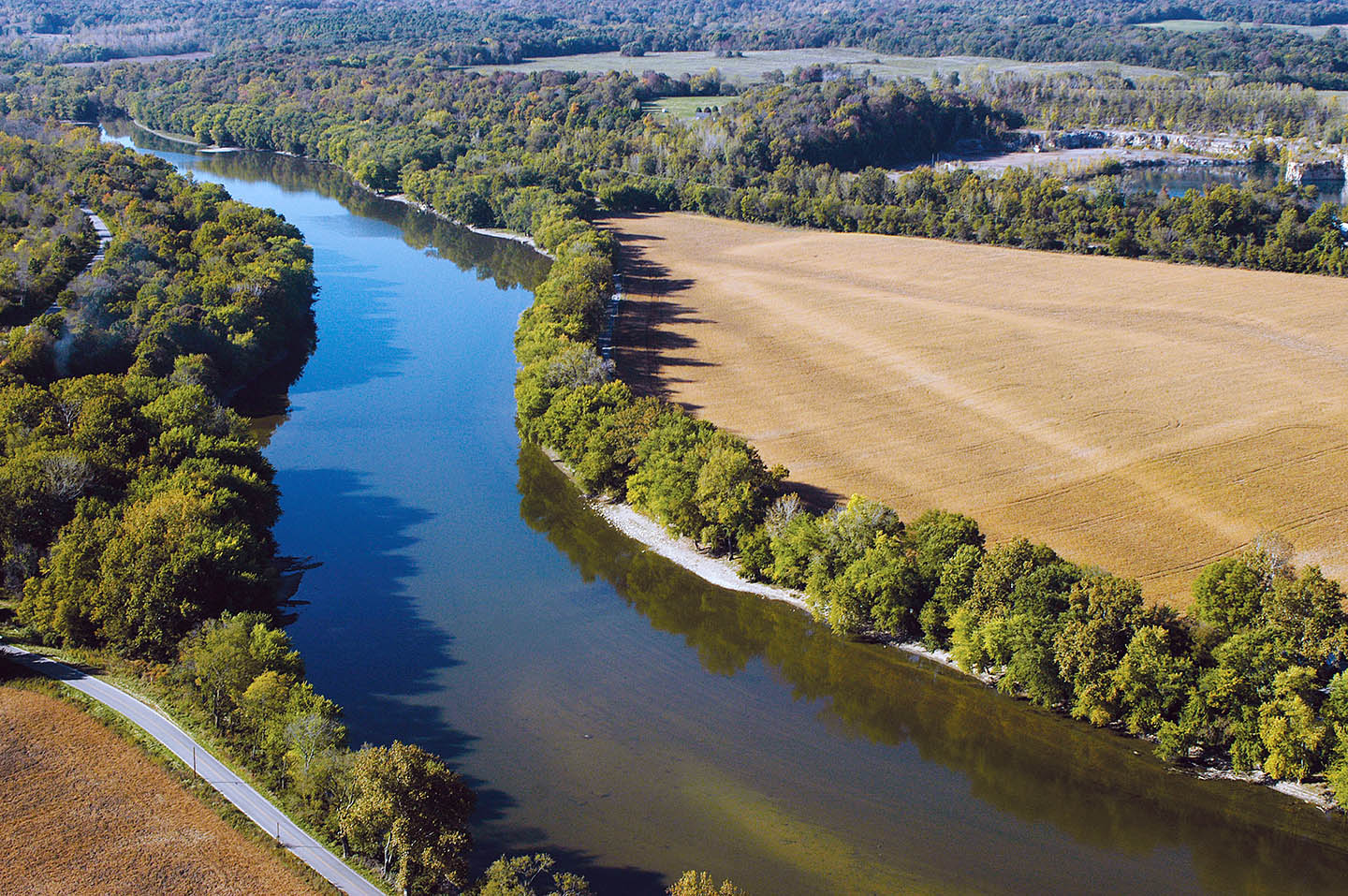Main Content
Indiana State Nutrient Reduction Strategy
Full Strategy
Executive Summary
Table of Contents
Milestones and Action Items Table
Appendices
The Indiana State Nutrient Reduction Strategy (SNRS) is the product of an inclusive effort of the Indiana Conservation Partnership (ICP) under the leadership of the Indiana State Department of Agriculture (ISDA) and the Indiana Department of Environmental Management (IDEM) to capture statewide, present and future endeavors in Indiana, which positively impact the State’s waters, as well as gauge the progress of conservation, water quality improvement and soil health practice adoption in Indiana.
The SNRS represents Indiana’s commitment to reduce nutrient runoff into waters from point sources and non-point sources alike. The objectives of this strategy include:
- Identifying water quality challenges and concerns in Indiana;
- Involvement and engaging of stakeholders and partners in the state’s efforts to reduce nutrients loads;
- Prioritization of HUC 8 watersheds within Indiana, and further prioritization of smaller HUC12 watersheds within Indiana’s ten major river and lake basins;
- Discussion of water quality monitoring and regulatory control of point sources;
- The inventory and utilization of resources and practices to achieve their highest impact on nutrient reduction;
- Encouragement of voluntary incentive based conservation through the many local, state and federal water quality related programs;
- And measuring the impacts of conservation best management practices and tracking nutrient load reductions.
The Indiana SNRS serves as a renewed effort to encourage outreach and education to conservation partnerships and the public regarding stewardship of Indiana’s waters. The strategy acknowledges that while the potential to reduce nitrogen and phosphorus entering our waters is great, the achievement of these objectives is dependent upon the cooperation of state, federal and local organizations and initiatives, positively changing individuals’ behavior via understanding their motivations, as well as many other complex factors, including the location and nature of conservation practices on productive agricultural ground and other rural best management practices (BMPs) such as filter strips, buffers, nutrient management, and managed drainage. Septic system management, appropriate residential fertilizer applications, erosion control at construction sites, and urban BMPs such as green infrastructure will be key to controlling nutrient runoff. As such, there will always be a need for continued efforts in conservation, education, outreach and research in order to maintain progress.
Indiana's Commitment to Enhance Water Quality
Please click on a colored basin below to get more information about water quality initiatives.
View larger map
For more information about Indiana's commitment to enhance water quality, please contact ISDA.
Conservation Achievements
The Indiana Conservation Partnership (ICP) aims to provide technical, financial and educational assistance to Hoosiers working to positively impact our soil and water resources. The ICP provides expertise to landowners and leverages both state and federal funds to put conservation on the ground in the form of Best Management Practices and technologies. Below are links to the ICP’s achievements across the state for 2017, including the conservation workload of the partnership as a whole, as well as the resulting annual nutrient and sediment load reductions, which illustrate the amounts of nitrogen, phosphorus and topsoil that are kept out of Indiana’s waterways.
| 2019 Active Practices | 2019 Implemented Practices |
|
Nitrogen |
- Supporting Tabular Data for 2019 ICP Conservation Accomplishments
- Methodology - USEPA Region 5 Load Reduction Modeling of Completed Conservation Practices in Indiana
Indiana's Sediment and Nutrient Load Reductions - Interactive Map
Download Sediment and Nutrient Load Reduction data by HUC 12 Watershed
2019 Sediment and Nutrient Load Reductions in Significant Watersheds and Waterbodies
- Eagle Creek Reservoir
- Geist Reservoir
- Kankakee River Basin
- Mississippi River Basin
- Morse Reservoir
- Patoka-White River Basin
- Wabash River Basin
- Western Lake Erie Basin
2019 Sediment and Nutrient Load Reductions for Indiana's Congressional Districts
- 1st Congressional District
- 2nd Congressional District
- 3rd Congressional District
- 4th Congressional District
- 5th Congressional District
- 6th Congressional District
- 7th Congressional District
- 8th Congressional District
- 9th Congressional District
- All Congressional Districts
For previous years' data, please visit the archive.
Contact Us
ISDA appreciates receiving feedback regarding the State Nutrient Reduction Strategy. Please email your comments to ISDANutrientReduction@isda.in.gov
Related Links
- Indiana Agriculture Nutrient Alliance
- Hypoxia Page from USGS
- Hypoxia Task Force 2017 Report to Congress
- Mississippi River Basin Initiative
- Mississippi River/Gulf of Mexico Hypoxia Task Force
- Conservation Cropping Systems Initiative
- USDA-NRCS Soil Health Campaign
- Ohio Nutrient Reduction Strategy
- Minnesota Nutrient Reduction Strategy
- Iowa Nutrient Reduction Strategy





